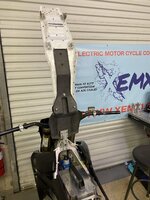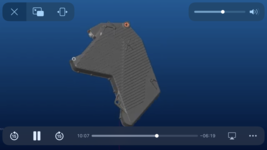DonCox
Well-known member
- Likes
- 617
- Location
- Lake Havasu City, AZ
My friend at XEMX1.com has raced his XE4 model converted YZ250F to electric in an enduro race in Florida ( Mondon Hill ). It was 3 x 10 mile laps. He built a battery swap system into the bike, and he swapped the battery each lap . It took 18-21 seconds to do it. The battery is close to the Alta in cells, 400 VTC6 cells in each pack. After 10 miles, each the packs had about 75V left, which is right at 60%, but would it do another full power lap?
Here is a picture of him on the bike, but he didn't go pro the race, but here is one of the leading riders go pro.
He has made a seat tank thing that flips up and makes the change real quick.
But there is the cost of all of this. He had 4 batteries, one for practice and 3 for the race. You could probably had one charged from practice to use for the 3rd lap, but still an expense.


Here is a picture of him on the bike, but he didn't go pro the race, but here is one of the leading riders go pro.
But there is the cost of all of this. He had 4 batteries, one for practice and 3 for the race. You could probably had one charged from practice to use for the 3rd lap, but still an expense.






